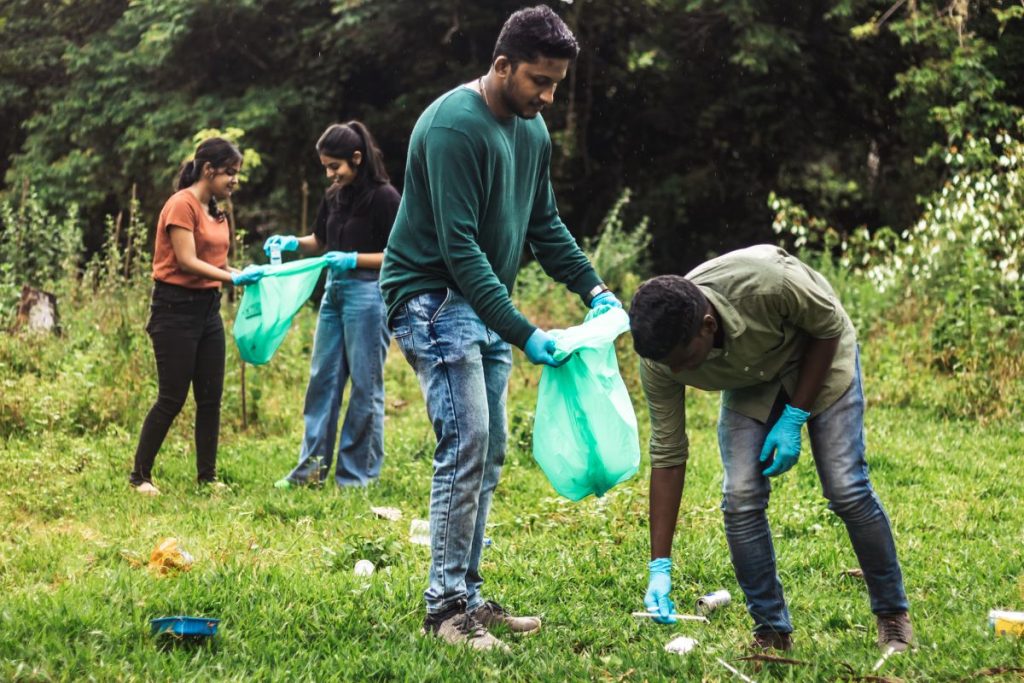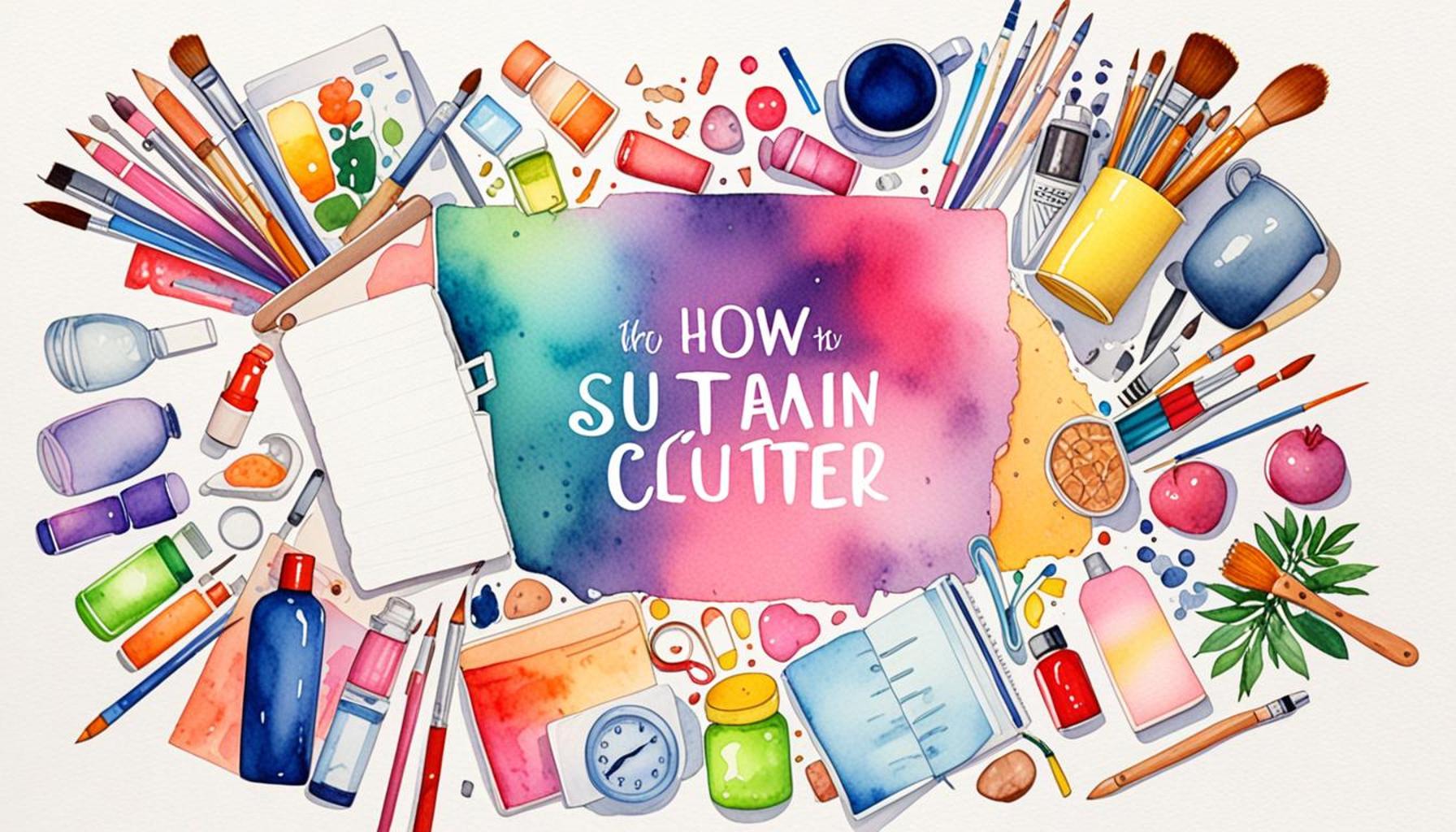Sustainable Minimalism: Reducing Clutter with Eco-Friendly Practices

The Rise of Sustainable Minimalism
In a society defined by rapid consumption and relentless accumulation, the shift towards sustainable minimalism represents a transformative approach to living. This ideology not only advocates for a clutter-free environment but also emphasizes the importance of eco-friendly practices, work-life balance, and personal fulfillment. By prioritizing sustainability and mindfulness in our everyday choices, we can make substantial strides toward environmental preservation while enhancing our quality of life.
Understanding Sustainable Minimalism
Sustainable minimalism combines the principles of minimalism—reducing the number of possessions and simplifying life—with sustainability. It encourages individuals to reflect on what they truly need versus what they are conditioned to desire. This thoughtful consideration not only lightens physical spaces but also fosters mental clarity and peace. For example, a minimalist home can lead to lower stress levels and improved productivity, enabling individuals to focus on what matters most in their lives.
Key Practices to Embrace
Implementing sustainable minimalism in daily life can involve several practical strategies.
- Declutter Mindfully: Take the time to assess each item you own. Ask yourself whether it serves a practical purpose or brings joy. This process can lead to identifying possessions that can be donated or recycled, ultimately reducing waste.
- Choose Quality Over Quantity: Investing in high-quality items—such as handmade furniture or sustainably sourced clothing—may cost more upfront but pays off over time. These items often outlast cheaper alternatives, reducing the need for replacement and minimizing waste.
- Embrace Second-Hand Purchases: Thrift stores and online marketplaces like Poshmark or eBay offer vast selections of pre-owned items. Supporting second-hand shopping not only reduces your carbon footprint but also contributes to a circular economy, where goods are reused rather than disposed of.
- Recycle and Upcycle: Get creative with old items rather than throwing them away. For example, glass jars can become organizers or planters. This not only keeps waste out of landfills but also allows for personal expression through DIY projects.
- Practice Digital Decluttering: In a digitally driven world, keep your electronic life organized. Regularly review applications, clean up inboxes, and utilize cloud storage to manage files efficiently. This helps create a more serene digital environment and can prevent the digital overwhelm that many experience today.
The Broader Impact of Sustainable Minimalism
Adopting these sustainable practices not only enhances individual well-being but also contributes to a broader movement focused on ecological responsibility. As more people engage in sustainable minimalism, collective action can lead to significant environmental impacts. According to a 2021 report from the Environmental Protection Agency (EPA), waste generated per person increased, highlighting the need for intentional consumption habits. By leading a simpler life, individuals can set an example for their communities, inspiring others to take part in the pursuit of sustainability.
In conclusion, sustainable minimalism invites us all to join a journey towards a more mindful existence, fostering not only personal growth but also collective environmental stewardship. As you embark on this path, you may find that a less cluttered life can open up space for inspiration, creativity, and genuine contentment.

DIVE DEEPER: Click here to discover the power of prioritization
Practical Steps Toward Sustainable Living
Transitioning to a lifestyle that embodies sustainable minimalism is a journey that begins with a single step—recognizing the impact of our consumption habits on both personal and environmental well-being. As the world faces unprecedented challenges such as climate change and resource depletion, adopting eco-friendly practices within a minimalist framework can feel both empowering and essential. Those looking to adopt a more sustainable lifestyle will find that even small adjustments to their daily habits can lead to substantial changes.
Mindful Decluttering: The First Steps
Mindful decluttering is where the journey starts. It involves scrutinizing what you own and identifying items that truly enhance your life. This practice extends beyond mere physical belongings; it also encompasses relationships and commitments that contribute to stress and clutter in one’s life. Here are a few methods to get started:
- The Four-Box Method: Label four boxes as “Keep,” “Donate,” “Recycle,” and “Trash.” Go through your possessions systematically and place each item in the appropriate box. This tangible process can create immediate satisfaction while encouraging decisive action.
- The 30-Day Minimalism Game: Challenge yourself to remove an item from your life on the first day, two items on the second day, and so forth until the end of the month. This game not only assists in decluttering but also highlights the overwhelming nature of material accumulation.
Eco-Conscious Choices: A Shift in Perspective
Once you’ve streamlined your belongings, the next step is to focus on making eco-conscious choices. This involves being intentional about what you bring into your home. Here are some strategies for purchasing sustainably:
- Support Local Businesses: When possible, purchase from local artisans and farmers. This not only stimulates the local economy but reduces the carbon footprint associated with shipping goods long distances.
- Understand Supply Chains: Research brands and manufacturers. Choose companies focused on sustainable practices, such as those using recycled materials or fair labor practices, to ensure your purchases support eco-friendly initiatives.
Integrating Minimalism with Everyday Life
Integrating sustainable minimalism into your daily routine affects not only your physical space but also your mindset. Emphasizing experiences over possessions can lead to profound fulfillment, guiding you to prioritize what adds value to your life. Consider these lifestyle changes:
- Digital Detox: As we accumulate digital clutter, take time to streamline your online footprint. Delete unneeded accounts, unsubscribe from excessive emails, and organize your digital files to reduce digital overwhelm.
- Adopt a Capsule Wardrobe: A capsule wardrobe, consisting of a limited number of versatile clothing pieces, can significantly reduce decision fatigue and closet clutter while promoting sustainable fashion.
Incorporating sustainable minimalism into your lifestyle is more than just a condensation of your material goods; it is a holistic approach to living that affirms deep respect for the environment and a commitment to personal well-being. As we navigate this journey, it’s important to remember that every small step counts in creating a more sustainable future.
| Advantage | Description |
|---|---|
| Environmental Impact | Implementing sustainable minimalism significantly reduces waste, conserving resources and lowering carbon footprints. By minimizing clutter, individuals can help combat pollution and support eco-friendly practices. |
| Financial Savings | Fewer possessions lead to decreased spending on unneeded items, allowing for investments in sustainable alternatives. This approach promotes a more mindful consumption pattern, enhancing long-term financial well-being. |
Adopting the principles of sustainable minimalism not only enhances personal well-being but also reflects a commitment to a healthier planet. By focusing on reducing clutter, individuals can prioritize essential items that contribute positively to their lives while actively participating in the greater narrative of environmental stewardship. This philosophy encourages us to question the necessity of our possessions, fostering a mindful approach to consumption that resonates across all aspects of life. As we delve deeper into eco-friendly practices, the benefits of decluttering become increasingly clear, revealing a path towards living in alignment with our values and the resources of our planet. By engaging with this transformative movement, one can discover innovative solutions that merge simplicity with sustainability.
DISCOVER MORE: Click here to learn about intentional living
Creating a Conscious Home Environment
In a world that often glorifies excess, one of the greatest challenges we face in adopting sustainable minimalism is creating a home environment that reflects our values. Achieving a conscious living space means considering every element within it, from the furniture to the decor, and ensuring that these choices align with an eco-friendly ethos.
Eco-Friendly Home Decor
When selecting home decor, choosing items that are both sustainable and aesthetically pleasing can significantly reduce waste while elevating your living space. Consider these approaches to enhance your home:
- Choose Secondhand or Vintage: Thrift stores, garage sales, and online marketplaces like Facebook Marketplace or Craigslist are treasure troves for unique decor. By opting for secondhand items, you not only keep usable goods out of landfills but also embrace history and character.
- Opt for Natural Materials: Furniture and decor made from sustainable materials, such as bamboo, reclaimed wood, or organic cotton, can enhance your home while supporting eco-conscious practices. Sourcing these materials can directly contribute to reducing the environmental impact of production.
Energy Efficiency in Home Management
A sustainable minimalism mindset also extends to how we manage our home energy consumption. Making energy-efficient choices can diminish both your carbon footprint and your utility bills. Here are a few sustainable options:
- Implement Smart Home Technology: Utilizing smart thermostats or energy management systems can help you track and reduce your energy consumption. These technologies facilitate adjustments based on your patterns and preferences, making it easier to conserve energy.
- Switch to Energy-Efficient Appliances: When it’s time to replace appliances, seek out those with high energy-efficiency ratings (Energy Star certified, for example). These appliances use less energy and water, providing cost savings while promoting sustainability.
Waste Reduction and Recycling
The journey toward sustainable minimalism and reduced clutter is incomplete without mastering the art of waste reduction and recycling. Developing a conscientious approach to waste can transform household waste from an unavoidable aspect of life to an opportunity for positive change:
- Commit to a Zero-Waste Lifestyle: Consider adopting a zero-waste philosophy, which emphasizes the reduction of waste through creative reuse and recycling. Investing in reusable items, such as bags, containers, and utensils, can significantly minimize single-use plastics and packaging.
- Engage in Community Recycling Programs: Familiarize yourself with local recycling guidelines and participate in community initiatives. Many municipalities offer curbside recycling and hazardous waste collections, which can help you responsibly dispose of items that require special handling.
As individuals make conscious choices and educate themselves about sustainable practices, small adaptations can have a substantial impact on our environment. Exploring innovative and eco-friendly approaches fosters a more profound connection to personal well-being while cultivating a healthy relationship with the planet. In integrating these principles into everyday life, the goal is to create an intentional, clutter-free environment that reflects a dedication to both sustainability and simplicity.
DIVE DEEPER: Click here to discover more
Conclusion
As we navigate the complexities of modern life, the combination of sustainable minimalism and eco-friendly practices offers a refreshing path toward achieving clarity and purpose in our homes and lifestyles. Embracing this philosophy not only paves the way for reduced clutter but also fosters a deeper connection with our environment and well-being. By choosing quality over quantity, sourcing sustainable materials, and engaging in waste reduction strategies, we actively contribute to a healthier planet.
Each mindful decision, whether it involves selecting secondhand decor or implementing energy-efficient solutions, creates a ripple effect, encouraging communities to adopt similar practices. The journey towards minimalism is not purely about subtracting items; it is about enriching our lives through thoughtful choices that resonate with our values. As we reshape our living spaces, we not only create aesthetically pleasing environments but also raise awareness of the environmental responsibilities we share.
Ultimately, sustainable minimalism is about the stories behind the things we choose to keep and the commitment to nurturing our planet. By continuing to educate ourselves and align our practices with sustainable principles, we can cultivate spaces that reflect our intentions—spaces that inspire not just simplicity and beauty, but also a legacy of care for future generations. As you embark on this transformative journey, remember that every small step counts toward a greener, clutter-free existence.


